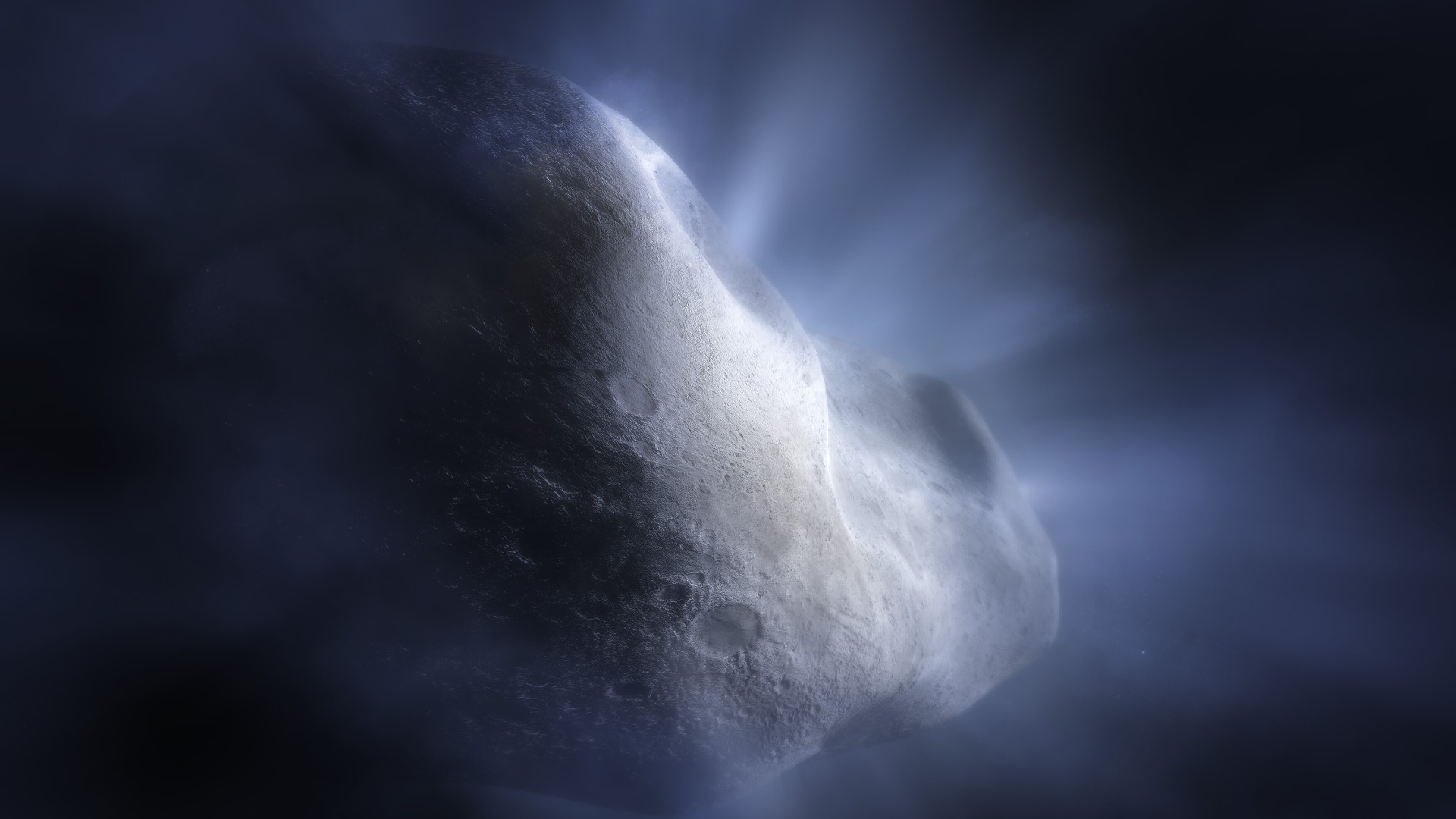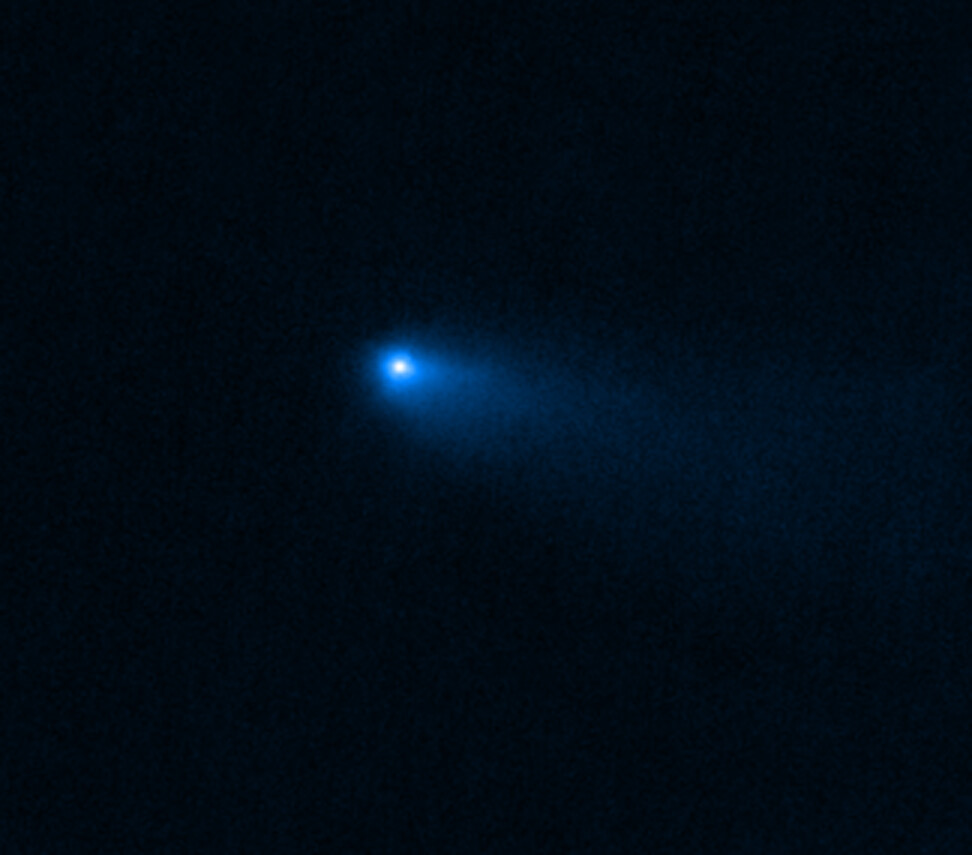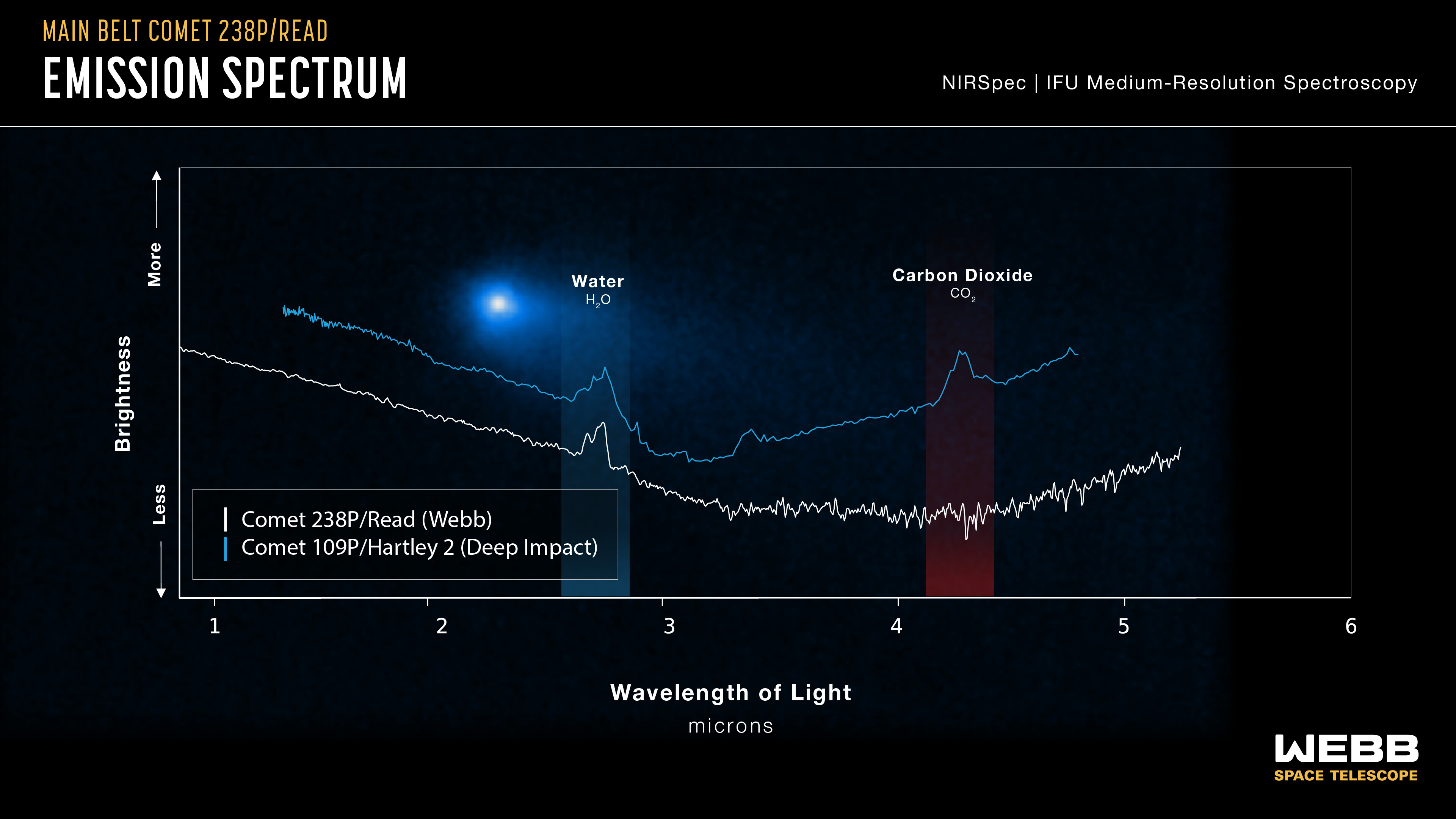James Webb Space Telescope discovers water around a mysterious comet
The study of Comet 238P/Read, which lurks in the main asteroid belt, could help reveal the source of Earth's water, a vital ingredient for life on our planet.

The James Webb Space Telescope has spotted water around a rare comet located in the main asteroid belt between Jupiter and Mars.
The observation represents another scientific breakthrough for the James Webb Space Telescope (JWST), representing the first time that gas, in this case, water vapor, has been detected around a comet in the main asteroid belt. This is important as it shows that water in the early solar system could have been preserved as ice in the main asteroid belt.
"In the past, we've seen objects in the main belt with all the characteristics of comets, but only with this precise spectral data from the JWST can we say 'yes,' it's definitely water ice that is creating that effect," University of Maryland astronomer Michael Kelley, who led this research, said in a statement. "With the JWST's observations of Comet Read, we can now demonstrate that water ice from the early solar system can be preserved in the asteroid belt."
The discovery of water vapor around Comet 238P/Read could significantly boost theories that water, a vital ingredient for life, was delivered to our planet from space by comets. But the study of the comet has also delivered a mystery: Carbon dioxide, which astronomers expected to see, is missing from Comet 238P/Read.
Related: James Webb Space Telescope (JWST) — A complete guide
The seeming lack of carbon dioxide around Comet 238P/Read was more surprising to the team than the discovery of water vapor, as this compound has been previously calculated to make up as much as 10% of the volatile matter in comets that is easily boiled off by the sun.
The team said that there are two possible reasons why Comet 238P/Read may be missing carbon dioxide. For one, the comet may have had carbon dioxide during its formation, which it has lost thanks to warming by the sun.
Get the Space.com Newsletter
Breaking space news, the latest updates on rocket launches, skywatching events and more!
"Being in the asteroid belt for a long time could do it — carbon dioxide vaporizes more easily than water ice and could percolate out over billions of years," Kelley said.
The alternative theory for the lack of carbon dioxide is that this main belt comet may have been formed in an area of the solar system devoid of the compound.

'Come here often?' Investigating main asteroid belt comets?
As its name suggests, the main asteroid belt is mainly home to rocky bodies like asteroids. Yet it does also host the occasional comet-like body like Comet 238P/Read. These cometary bodies can be identified by the fact that they periodically brighten as a halo of material or a coma surrounds them. They can also develop a tail of material that is characteristic of comets.
A comet's coma and tail come from solid icy material, which transforms straight into gas through a process called sublimation as comets approach the sun and heat up. This sublimation is why astronomers had theorized that all comets come from the Kuiper Belt out past Neptune, or the Oort Cloud, which is believed to exist at the very edge of the solar system; both locations would offer the water ice in these bodies protection from solar radiation, allowing it to be preserved, while a location closer to the sun near Mars might not.
The classification of "main belt comet" is a fairly new one, and Comet 238P/Read was one of three objects that helped established this family of comets found closer to Earth. Astronomers weren't unclear whether these icy bodies could also hang on to frozen water. This is the first conclusive evidence that they can.

Observing the comet in such detail is quite the feat for the powerful space telescope, and it represents the first time that gas has been confirmed in such a main-belt comet.
"Our water-soaked world, teeming with life and unique in the universe as far as we know, is something of a mystery — we're not sure how all this water got here," research co-author and Webb Deputy Project Scientist for Planetary Science Stefanie Milam said in the statement. "Understanding the history of water distribution in the solar system will help us to understand other planetary systems and if they could be on their way to hosting an Earth-like planet."
The team will now aim to look past Comet 238P/Read to discover if similar rare comets have similar compositions. This could involve further observations with the JWST and other telescopes and in-situ missions that could actually collect samples from main belt comets.
"These objects in the asteroid belt are small and faint, and with the JWST, we can finally see what is going on with them and draw some conclusions," co-author and Universities for Research in Astronomy (AURA) astronomer Heidi Hammel said. "Do other main belt comets also lack carbon dioxide? Either way, it will be exciting to find out."
The team's research is published in the journal Nature.
Join our Space Forums to keep talking space on the latest missions, night sky and more! And if you have a news tip, correction or comment, let us know at: community@space.com.

Robert Lea is a science journalist in the U.K. whose articles have been published in Physics World, New Scientist, Astronomy Magazine, All About Space, Newsweek and ZME Science. He also writes about science communication for Elsevier and the European Journal of Physics. Rob holds a bachelor of science degree in physics and astronomy from the U.K.’s Open University. Follow him on Twitter @sciencef1rst.
-
jdobbinsPHD Reply
It seems quite a stretch to suggest that the water on Earth came from comets, considering the Earth's surface is 3/4 water, and the oceans are miles deep in some places. That total water volume coming from comets passing by or crashing into Earth challenges credibility.Admin said:The James Webb Space Telescope has imaged a rare main asteroid belt comet, discovering water around the object that could help reveal how Earth became a wet planet teeming with life.
James Webb Space Telescope discovers water around a mysterious comet : Read more -
Unclear Engineer Reply
Not really an oxymoron - haven't you heard of "dry ice", i.e., solid CO2?Voluntaryist said:"water ice" is an oxymoron. "Water" is liquid H20, "ice" is solid H20.
And, there are plenty of other frozen substances on the outer planets that would be liquid or gases here on Earth. So, "water ice", "CO2 ice", "ammonia ice" are all reasonable ways to convey the intended meaning, rather than just saying "ice" or "ices".
One the other hand, it does bug me that astophysicists have decided to call all sorts of elements heavier than helium "metals". Most of those elements are not what other scientific disciplines define as metals, and certainly not what laypeople think of as metals.









